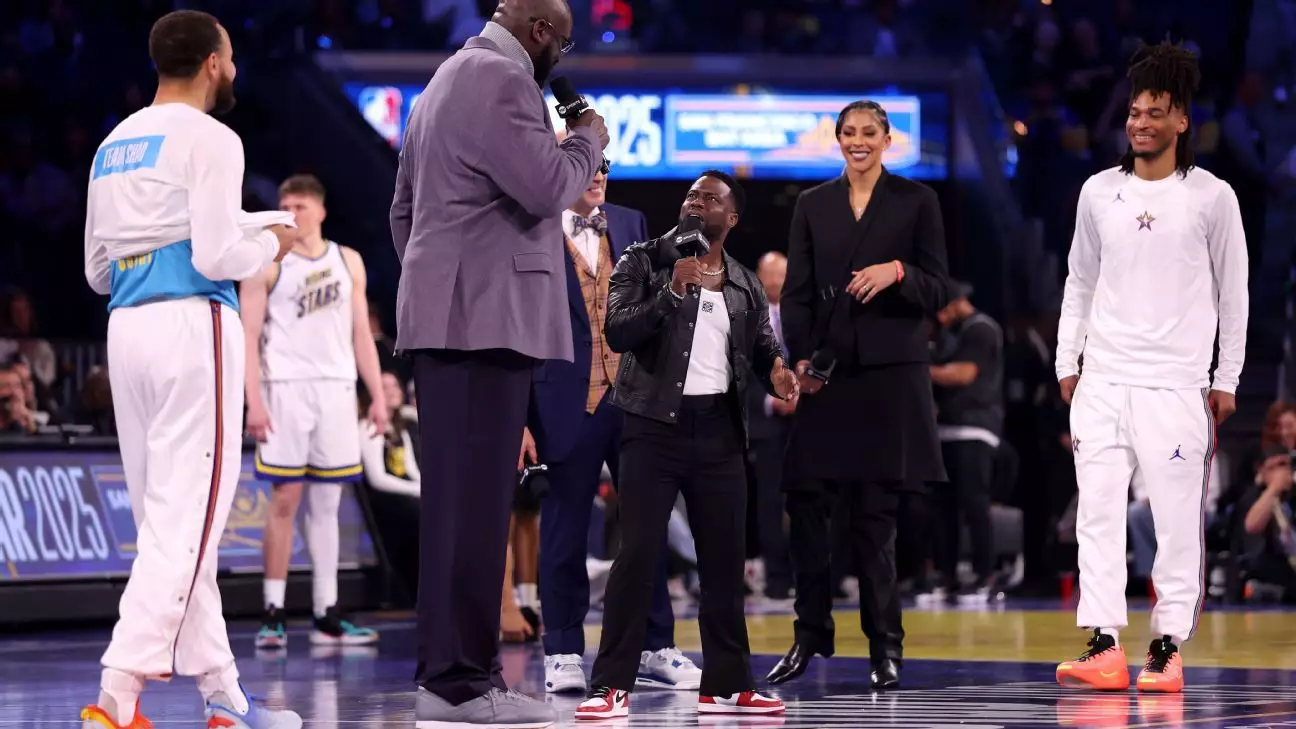The annual NBA All-Star Game traditionally occupies a unique position in the sports calendar, acting as a showcase of talent and entertainment. However, recent changes to the tournament format have sparked considerable debate among players and fans alike. The departure from the historic East vs. West matchup to a new single-elimination style tournament has stirred mixed reactions, with players raising concerns about extended breaks and overall enjoyment.
This year, the All-Star Game adopted a four-team format where teams were drafted by prominent analysts such as Charles Barkley, Kenny Smith, and Shaquille O’Neal. The teams, comprising both seasoned veterans and emerging stars, aimed to reach a target score of 40 points per round. In theory, this fresh structure was designed to enliven the event and attract viewer interest by offering unexpected outcomes and intensifying competition.
Despite the new setup aiming for excitement, the reality fell short for many players. Concerns centered around the numerous stoppages during play, which players argued disrupted the natural flow of the game. For instance, Trae Young expressed his discontent, suggesting that the pacing was manipulated for television ratings rather than pure competition. Instead of an uninterrupted display of skill, the gameplay was marred by gimmicks like comedian Kevin Hart’s intermissions that detracted from the essence of the event.
While some players embraced the competitive nature of the tournament, others voiced their concerns over the pacing of the games. Shai Gilgeous-Alexander noted that, despite the interruptions, he appreciated the more competitive atmosphere but also demanded a revision of future formats. His remarks underscore a key tension at the heart of the All-Star Game: balancing entertainment with competition.
Jaylen Brown echoed this sentiment, highlighting that halting play hinders physicality and flow. The implication is clear—if the objective is to foster an engaging competition, the ongoing breaks could undermine the athletes’ ability to display their skills. The question remains: how do organizers create a format that retains the competitive rigor while also entertaining a diverse fanbase?
Another noteworthy aspect of the All-Star Game was the absence of heavyweights like LeBron James and Giannis Antetokounmpo due to injuries. Such omissions inevitably dilute the spectacle, leaving a potential gap in star power that could impact both viewership and player morale. Critics of the new format remain concerned that the introduction of newer players from the Rising Stars event diminishes the significance and the historic prestige of the All-Star Game.
Draymond Green made an intriguing point during the broadcast, questioning the rationale behind integrating Rising Stars players into what has traditionally been a showcase for the league’s elite. His perspective reflects a broader concern about the dilution of the All-Star brand— a blend of veterans and rookies could potentially alienate long-time fans seeking to see the best of the best competing against one another.
As the dust settles on this year’s NBA All-Star Game, it’s clear that the league faces a pivotal juncture. With an overwhelming amount of player feedback highlighting various issues, it’s essential for NBA leadership to recalibrate their approach moving forward. This could mean reevaluating the frequency of game stoppages, reconsidering the inclusion of first and second-year players, and ensuring that the All-Star Game remains a revered event on the basketball calendar.
While the event undeniably captured moments of excitement—such as Curry’s MVP-level performance—the overarching sentiment among players suggests that the format requires further refinement to honor both the game’s competitive spirit and its role as a fan-centered spectacle. The NBA’s willingness to listen to its players and adapt accordingly might just determine the trajectory of future All-Star Games, potentially ushering in a new era of both excitement and respect for this esteemed event.

